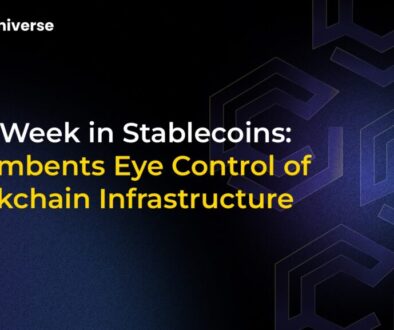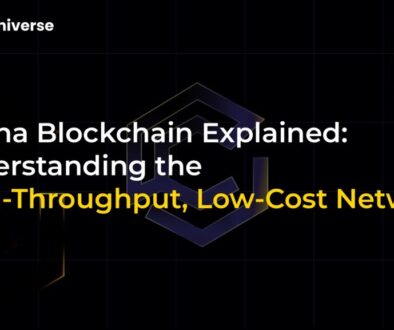The Great Consolidation: Why Only 3 Web3 Firms Retain Unicorn Status in 2025

The Crypto Gold Rush Is Over. The Age of Utility Has Begun.
Remember the days when a new crypto “unicorn”—a private company valued at over $1 billion—seemed to pop up every week? The crypto boom was a wild frontier, fueled by hype, speculation, and the promise of decentralized everything. But as we navigate 2025, the landscape looks dramatically different. The dust has settled, and the market has undergone a stark and necessary consolidation.
A recent CB Insights report on the global top 50 private companies sends a clear message: the era of speculative frenzy is giving way to a new focus on tangible value. According to the report, only three Web3 native companies have managed to hold onto their coveted unicorn status: Ripple, OpenSea, and Alchemy. The absence of once-mighty players like KuCoin and Chainalysis from the top rankings signals a profound market shift. Investors are no longer just betting on ideas; they’re backing proven utility, robust infrastructure, and real-world integration.
The Survivors’ Playbook: A Deep Dive into the Last Web3 Unicorns
So, how did these three companies not only survive the crypto winter but also thrive? Their success stories offer a blueprint for building sustainable value in the Web3 space. It’s a tale of bridging worlds, dominating a niche, and building the essential tools everyone needs.
1. Ripple ($15B Valuation): The Bridge to Traditional Finance
Ripple’s endurance is a masterclass in pragmatism. Instead of aiming to burn down the traditional financial (TradFi) system, Ripple chose to build a bridge to it. Its core business revolves around facilitating fast, low-cost cross-border payments for banks and financial institutions. Despite ongoing legal scrutiny surrounding its native token, XRP, the company’s underlying technology has gained significant institutional adoption.
Why it works: Ripple solves a real, expensive problem for a massive existing market. By integrating with legacy systems, it has created a stable, revenue-generating foundation that is less susceptible to the volatility of retail crypto sentiment. This focus on regulatory alignment and B2B solutions has made it a safe harbor for institutional capital.
2. OpenSea ($13.3B Valuation): The Unshakable Power of Network Effects
OpenSea, the original titan of the NFT marketplace, has weathered the storm of the NFT downturn. While countless competitors emerged with promises of lower fees and faster transactions, OpenSea’s resilience comes down to one powerful concept: network effects. It was the first major platform, and it became the default destination for creators and collectors alike.
Why it works: In a marketplace, liquidity is king. Sellers go where the buyers are, and buyers go where the sellers are. OpenSea established this critical mass early on, creating a moat built on brand recognition and user loyalty that has proven incredibly difficult for newcomers to overcome. Its survival proves that in Web3, a strong community and first-mover advantage can be just as valuable as technical superiority.
3. Alchemy ($10.2B Valuation): The Indispensable ‘Picks and Shovels’
While Ripple and OpenSea are consumer-facing giants, Alchemy operates behind the scenes, providing the essential infrastructure that powers a huge portion of the decentralized ecosystem. Often called the “AWS of Web3,” Alchemy provides developers with the tools, APIs, and node infrastructure needed to build and scale decentralized applications (dApps).
Why it works: During a gold rush, the surest bet is to sell the picks and shovels. As the Web3 space matures, the demand for reliable, scalable, and easy-to-use developer tools has skyrocketed. Alchemy’s success highlights a crucial trend: the market is placing immense value on the foundational layers that enable the entire industry to function and grow, regardless of which specific dApp or token is currently in the spotlight.
Beyond the Unicorns: Emerging Narratives Shaping 2025
The consolidation at the top doesn’t mean innovation has stalled. In fact, the opposite is true. Capital is now flowing into more focused and promising sectors that are set to define the next chapter of Web3.
- Real-World Assets (RWA): The tokenization of tangible assets like real estate, bonds, and even oil markets is gaining massive traction. Projects like Ondo Finance ($ONDO) and Chainlink ($LINK) are leading the charge, collaborating with financial behemoths like BlackRock and SWIFT to bring trillions of dollars of off-chain value onto the blockchain.
- AI & DePIN: The convergence of Artificial Intelligence and Decentralized Physical Infrastructure Networks (DePIN) is another hotbed of innovation. Platforms like Render ($RENDER) are creating decentralized GPU networks for rendering, while others explore on-chain AI agents, attracting partnerships with tech giants like NVIDIA and Stability AI.
- Next-Generation Infrastructure: The battle for blockchain supremacy is far from over. We’re seeing massive funding rounds for new, highly performant Layer 1 and Layer 2 solutions like Monad and 0G Labs, promising greater speed and scalability. Simultaneously, established chains like TRON are becoming dominant hubs for critical assets like USDT stablecoins, proving that efficiency and low transaction costs remain paramount.
Is It Still Worth Getting into Web3 in 2025?
Absolutely. The Crypto Market Consolidates as
For developers, builders, and long-term investors, the path forward is clearer than ever. The success of Ripple, OpenSea, and Alchemy demonstrates that the winning formula combines technical innovation with smart business strategy, strong community-building, and a clear connection to real-world value. The wild, chaotic gold rush may be over, but the era of sustainable, impactful innovation is just getting started.


